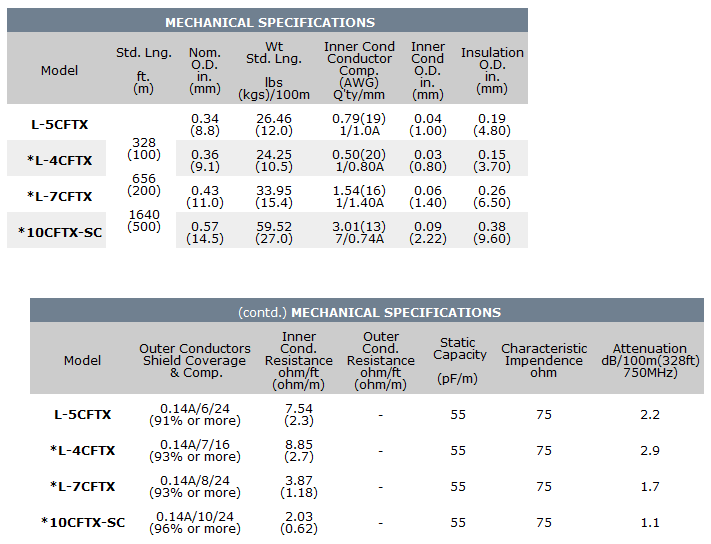
Do you need a cable that provides superior rejection of interference and offers increased bandwidth? Look beyond the customary coax and see why triaxial cables might be the best cable for the job.
Put simply, the triaxial cable (also known as triax cable), is just a low loss heavy-duty coax cable with some added armor. Triax cables are complete coaxial cables but are protected by an added metallic shield and an extra layer of insulation. This means that triax cables can do more than just conduct a signal – they also double up as a power conductor, making them the first cable of choice for connecting analog video cameras to equipment in the TV and broadcast industry, as they allow the signal and operation of the unit to happen from just one cable.
Triax cabling is most commonly installed and can be widely seen in professional video broadcasting events such as large concerts and sports events and are best suited for antenna and radar systems where noisy signals and higher than normal cross-talk, or unwanted signal transfer between communication channels is evident.
Television crews find triax cabling easy to use in sports arenas for example where they can easily plug into cables in the arena, rather than setting up their own cable system. So often times you’ll see triax cables running from the TV station’s van to various camera locations in the arena. Once the filming is complete, the cables are simply unplugged and tear down is a breeze.
The outer shield of the triax cable allows for multiplexing the signal which basically means that triaxial cables are able to take multiple signals, combine them into one signal, and transmit them. So for example, a standard triax system can provide power to the unit, genlock (generator locking), program audio, intercom, return video, tally and provide complete camera control from the CCU to the CAU (Control access unit).
Multiplexing offered by triax cables, essentially eliminates the need to use multiple cables and provides for a much cleaner gig setup, while reducing noisy signals at the same time!
Triax Vs. Fiber Optic
With the increase of HD video applications and high bandwidth demands, many moved to fiber optic or the SMPTE standard copper-fiber hybrid cable as an HD substitute cable to the triax. However, crews soon realized that fiber cabling is not only a lot more costly, both in time and labor, but repairs on the field and job site are practically impossible. On the other hand, triax cabling can endure extreme abuse and is easy to fix or replace in field applications. Agreed, HD signals can travel further on fiber, but triax covers enough distance for most field applications, like in a sports arena for example, making many professionals reconsider it as the go to cable for professional broadcasting.
Why Canare Triax Cables?
Canare manufactures the best in Pro Audio and Video Cable, 75 Ohm BNC, F and RCA Connectors, Patchbays, Cable Reels, Snake Systems, Assemblies, Crimp Tools and Cable Strippers. Professional broadcast engineers, sound technicians, A/V facility integrators, design consultants and many leading OEM’s rely on Canare’s product, proven reliability and top notch customer service.
All of Canare’s cables are RoHS compliant. Canare offers 75 ohm Triaxial Cables (L-5CFTX, L-4CFTX, L-7CFTX, 10CFTX-SC) that come with PE foam insulation, polyethylene Dielectric strength of 1000V AC/min, and an abrasion-resistance PVC jacket. Cable assemblies are also available!
Check out the Mechanical Specifications below:
Looking for more Canare products? Check them out here.
Don’t see a product in stock on our website? Call or email us at (800) 634-9476 or sales@pacrad.com and we will be happy to order it in for you.
Join us for an EXCLUSIVE product demo with Canare, on Wednesday, July 15th 2015 from 12pm-2pm! The experts from Canare will be showcasing, training and demoing new and best-selling products. You don’t want to miss out!
Meet and greet industry peers, learn about the newest products and check out the ever-expanding inventory at PacRad.
FREE LUNCH INCLUDED!
REGISTER NOW!


